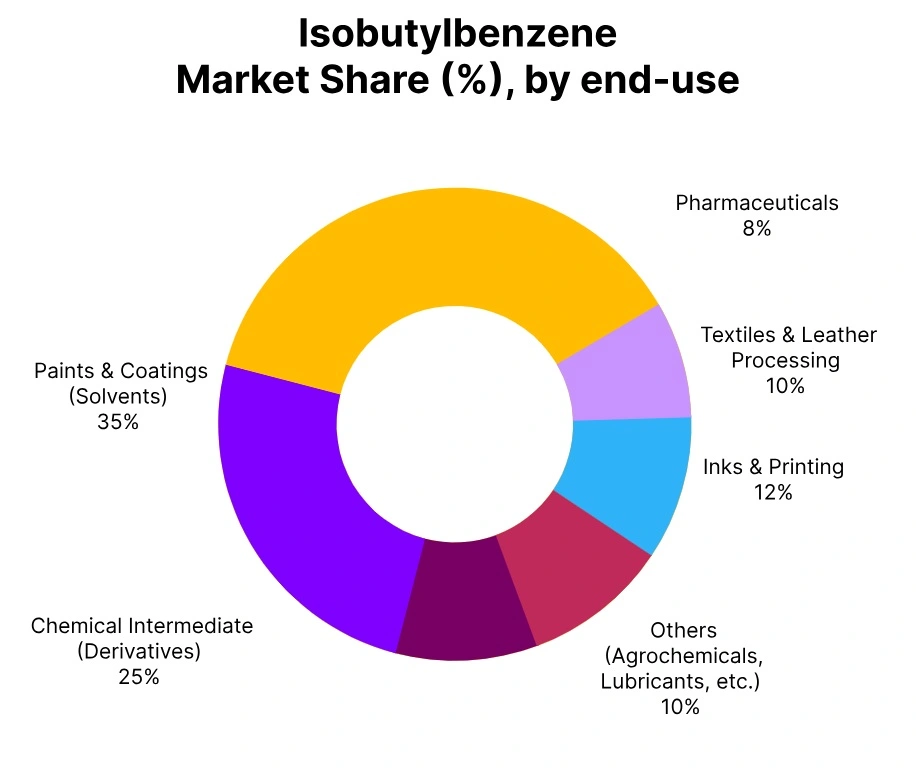Price-Watch’s most active coverage of Isobutyl Benzene price assessment:
- Industrial Grade (>99%) Ex-Mumbai, India
- Industrial Grade (>99%) CIF Houston (India), USA
- Industrial Grade (>99%) CIF Shanghai (India), China
Isobutyl Benzene Price Trend Q3 2025
In Q3 2025, the global Isobutyl benzene market exhibited an upward price trend, supported by consistent demand and firm feedstock costs. Stable freight conditions facilitated smooth international trade flows, while manufacturers reported sustained inquiry levels and steady procurement activity worldwide.
Limited alternative supply sources and efficient logistics helped maintain market balance, adding to overall price strength. The Isobutyl benzene price trend reflected broad-based growth in major markets, driven by tightening availability and resilient consumption patterns.
India
Isobutyl Benzene Domestic Prices Ex-Mumbai, India, Industrial Grade (>99%).
According to Price-Watch, in Q3 2025, the Isobutyl benzene prices in India under Ex-Mumbai terms saw a significant upward movement, supported by consistent domestic inquiries and tightening stock availability. The rising cost of upstream materials such as Benzene and Isobutylene influenced local production costs.
The Isobutyl benzene price trend in India stayed firm throughout the quarter, with manufacturers reporting steady order volumes from pharmaceutical and chemical intermediaries. Offer prices under FOB Mumbai terms were actively floated into global tenders, as Indian producers looked to profit on strong international interest.
The Isobutyl benzene price in India ranged between USD 1900–2500 per metric ton, reflecting a 17.71% increase from the previous quarter. In September 2025 Isobutyl benzene recording a modest increase of 1.31%.
The offered prices increased due to consistent procurement from downstream sectors such as pharmaceuticals and specialty chemicals, where manufacturers continued steady intake during the month.
China
Isobutyl Benzene Import prices CIF Shanghai, China, Industrial Grade (>99%).
According to Price-Watch, in Q3 2025, the Isobutyl benzene prices under CIF Shanghai freight rates for Isobutyl benzene shipments from India remained relatively stable, though elevated container handling costs impacted landed values.
The Isobutyl benzene price trend in China showed upward movement due to a strong number of inquiries from importers and limited local alternatives. Buyers showed increased interest toward the quarter-end as stock levels in eastern China dipped and dependency on Indian-origin cargoes grew.
Under FOB Mumbai terms, Indian exporters maintained competitive pricing, which added to consistent inflows into Chinese ports. The Isobutyl benzene price in China under CIF terms was assessed between USD 2070–2570 per metric ton, marking a 16.78% rise quarter-over-quarter.
In September 2025 Isobutyl benzene price reflecting a slight dip of 0.74%. The dip in offered prices was driven by a balanced export environment in the US, where moderate domestic demand enabled suppliers to allocate additional volumes for exports.
USA
Isobutyl Benzene Import prices CIF Houston, USA, Industrial Grade (>99%).
According to Price-Watch, in Q3 2025, the Isobutyl benzene prices under CIF Houston freight environment for Isobutyl benzene remained moderately steady, aided by well-scheduled sailings from Indian ports and manageable congestion at US terminals.
The Isobutyl benzene price trend in the USA moved up, as end-users in the specialty chemical segment showed renewed procurement interest amid constrained domestic production. Indian-origin cargoes were received on schedule, and traders noted a healthy number of inquiries during the quarter.
Offers under FOB Mumbai terms were actively evaluated in bulk contracts as U.S. buyers looked for reliable supply chains. The Isobutyl benzene price in the USA under CIF terms ranged between USD 2180–2670 per metric ton, reflecting a 16.19% increase in comparison to the previous quarter.
In September 2025 Isobutyl benzene prices showing a marginal decline of 0.10%. Offered prices from China remained largely stable, with only a minor downward revision seen as exporters aimed to maintain competitiveness amidst increasing competition from other Asian suppliers.


